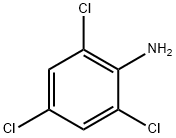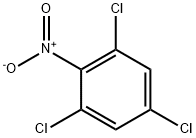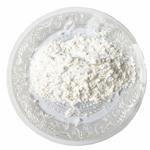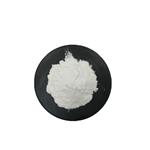Genotoxicity
Limited information is available regarding the potential genotoxicity of 2,4,6-trichloroaniline. 2,4,6-Trichloroaniline did not induce mutations in Salmonella typhimurium strains TA98, TA100, or TA1537 in the presence or absence of metabolic activation in plate-incorporation assays; microsomal-suspension assays using the same strains and metabolic-activation preparations were also negative. However, using the preincubation method, 2,4,6-trichloroaniline tested positive for mutagenicity in Salmonella and Escherichia coli (strains not specified). 2,4,6-Trichloroaniline tested negative in the Salmonella umu (SOS response) assay and failed to induce DNA repair in rat hepatocytes. In vivo, 2,4,6-trichloroaniline was mutagenic in the wing spot test in Drosophila. Rats treated orally with 2,4,6-trichloroaniline at 40 mg/kg-day (but not 0.4 or 4 mg/kg-day) for 6 months showed a small but statistically significant increase (p < 0.05) in the number of bone marrow cells containing chromosomal aberrations when compared with controls (1.6% vs. 0.4%, respectively); however, this study did not provide any study design details.
Description
Trichloroaniline is particularly important as a chemical intermediate in manufacturing many benzene derivatives and other organic compounds. For instance, 2,4,6-trichloroaniline is an essential precursor of 1,3,5-trichlorobenzene. The latter has been extensively studied and developed for insecticides and fungicides. It, in turn, is a precursor of trichlorodinitrobenzene, which is especially important in combatting crop diseases and is an intermediate for dyestuffs. In military applications, 2,4,6-trichloroaniline is utilized for the preparation of insensitive energetic material that is employed in several Navy weapons systems. The synthesis of 2,4,6-trichloroaniline has almost invariably been accomplished by chlorinating aniline with chlorine or sulfuryl chloride.
Chemical Properties
fine purple fibres
Uses
2,4,6-trichloroaniline is important as an intermediate in the manufacture of benzene derivatives, including 1,3,5-trichlorobenzene and is useful in the formation of fungicides, mono-azo dyestuffs, and the preparation of hexachlorodiphenyl urea.
Tetrachloronitrobenzene was prepared from 2:4:6-trichloroaniline,which was converted by a Sandmeyer reaction into 1:2:3:5- tetrachlorobenzene.
Preparation
2,4,6-Trichloroaniline can be prepared by reaction of dry aniline with chlorine gas while in a anhydrous solution of carbon tetrachloride. 2,4,6-Trichloroaniline precipitates from solution as a white solid. If water is introduced to the solution the white material will polymerize to form aniline black.
Process for the preparation of 2,4,6-trichloroaniline
General Description
Long needles or fine, light purple fibers.
Air & Water Reactions
2,4,6-Trichloroaniline may be sensitive to exposure to light and air. Insoluble in water.
Reactivity Profile
2,4,6-Trichloroaniline is incompatible with acids, acid chlorides, acid anhydrides, chloroformates, and strong oxidizing agents. .
Fire Hazard
Flash point data for 2,4,6-Trichloroaniline are not available. 2,4,6-Trichloroaniline is probably combustible.
Safety Profile
Moderately toxic by ingestion.Irritant. Questionable carcinogen with experimentalcarcinogenic data. Mutation data reported. When heatedto decomposition it emits very toxic fumes of Clí andNOx.
Purification Methods
Crystallise the aniline from ligroin. The benzoyl derivative has m 174o (from EtOH). [Beilstein 12 H 627, 12 IV 1281.]







